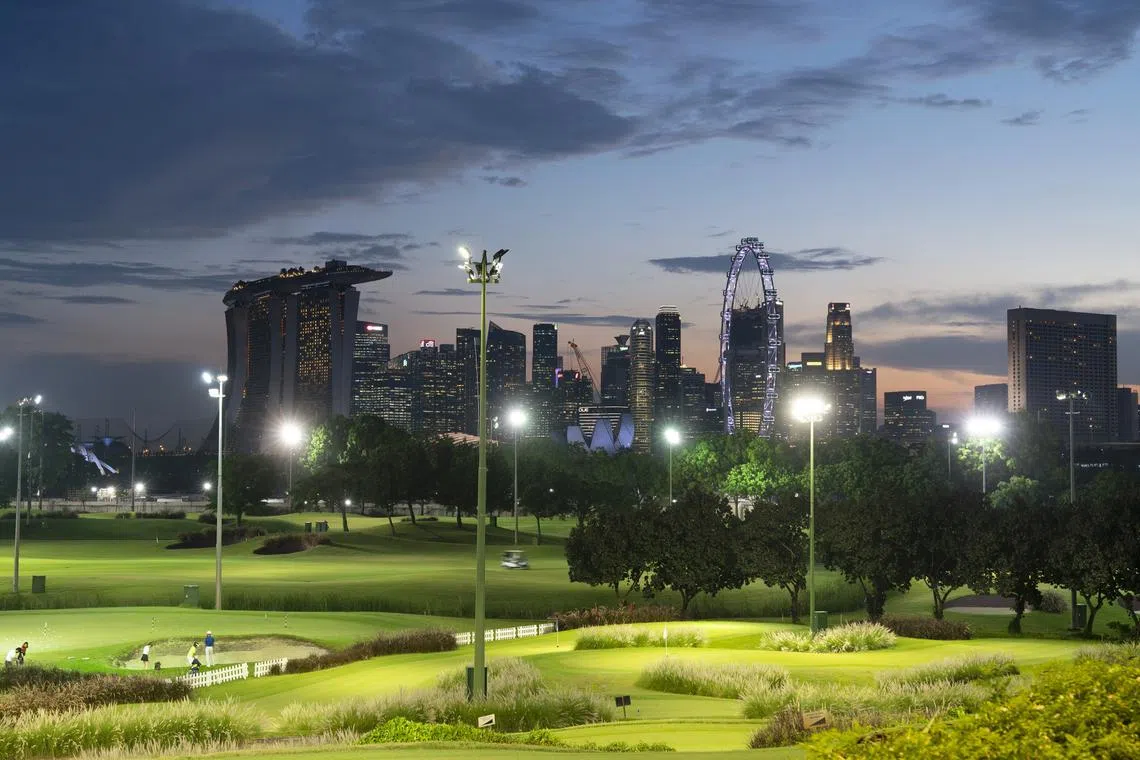Bittersweet feeling as golfers bid farewell to Marina Bay course
The facility consistently maintained a high occupancy rate of close to 100 per cent, which labour chief Ng Chee Meng said was a testament to its popularity
FOR the many golfers who turned up on Sunday (Jun 30) afternoon to bid a final farewell to the Marina Bay Golf Course (MBGC), it was understandably a sad occasion.
After all, the iconic 18-hole public course at Tanjong Rhu had served about 1.3 million golfers throughout its 18-year existence as they enjoyed their favourite sport at both day and night sessions.
But the organisers of the final event for some 70 golfers at the historic venue – operated by NCI Golf, a subsidiary of the National Trades Union Congress (NTUC) Club – turned it into a celebration in tribute to the remarkable journey MBGC had made since its inception in 2006.
NTUC secretary-general Ng Chee Meng, who delivered remarks during a dinner at the course’s popular Canopy Cafe, said that despite being a public course, MBGC “distinguished itself with impeccable maintenance standards” that rival even those of exclusive private clubs.
“MBGC competed with some of Singapore’s most exclusive country clubs by offering high-quality golf accessible to everyone,” he said.
“The vision aligns with that of our founding father Lee Kuan Yew, who believed in providing universal access to activities enjoyed by the affluent. Thus, MBGC played a crucial role in ensuring that the average worker can enjoy facilities like golf.”
Over nearly two decades, MBGC won numerous awards, including the Best Public Course in the Asia-Pacific from 2015 to 2022, and was consistently ranked among the top three courses in Singapore.
Golfers played on the greens amid a picturesque backdrop that took in the city skyline and landmarks such as the Marina Bay Sands integrated resort and the Singapore Flyer.
Ng shared that MBGC had consistently maintained a very high occupancy rate of close to 100 per cent, which he said was a testament to the course’s popularity.
This, he added, reflected MBGC’s reputation as a “preferred course” for golfers of all levels, from beginners to seasoned players alike.

Ng, who once made a hole-in-one on the second hole, had one key message in his remarks, and that was to stress that the closure of MBGC marked the beginning of a new chapter for the labour movement’s efforts to make golf more accessible and affordable to all.
He outlined three areas that the NTUC would focus on in order to meet that objective.
First, in the immediate term, there will be an increase in night golfing opportunities at Orchid Country Club, through its estate-less golf club My Golf Kaki (MGK), which has already seen membership rise from 7,000 to more than 9,000 this year.
Second, in the medium term, the revamped MGK will be the key enabler for greater access for playing golf, including alternative play played over six holes.
And third, in the longer term, NTUC will ensure continued access to affordable recreational experiences of the workers’ choices with new golf course concepts that will include family-centric features such as cycling tracks, nature trails and common spaces for picnics and performances.
There are also plans to work with golf clubs in Batam and Johor to offer reciprocal privileges.
Storied history
MBGC, designed by South African designer Phil Jacobs, will soon make way for redevelopment for other uses such as housing.
It has had a successful run since its beginning in 2006 as a model of tripartism – collaboration among the government, employers and unions – when 60 hectares of wasteland was converted into a thriving and flourishing business.
Operating six days a week, and night golf on three days, the bookings on most days had been full with about 8,000 golfers teeing off monthly.
It was also the only course in Singapore with a unique par-six hole and a signature par-three with an island green offering challenging experiences.
One area that was revenue-generating was the expansive driving range, with the four-tiered range and its 114 bays almost always fully occupied.
The management, under general manager Choo Wee Khiang, had been prudent and judicious in the running of the course, which managed to stay in the black even during the pandemic years.
Choo led a team of 42 people, spread over departments such as finance, administration, human resources and golfing operations.
Zulkarnaen Unus, who was a marshal at MBGC for eight years, said: “We were trained well. I have an offer to move to another club, and so have many of my colleagues. But it may not be the same. At MBGC, we were a real family.”
Decoding Asia newsletter: your guide to navigating Asia in a new global order. Sign up here to get Decoding Asia newsletter. Delivered to your inbox. Free.
Copyright SPH Media. All rights reserved.


